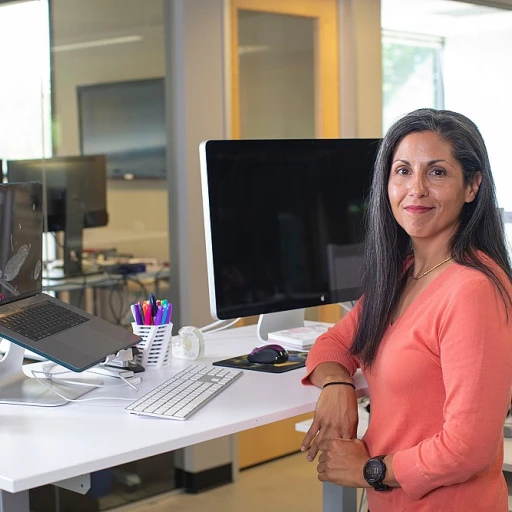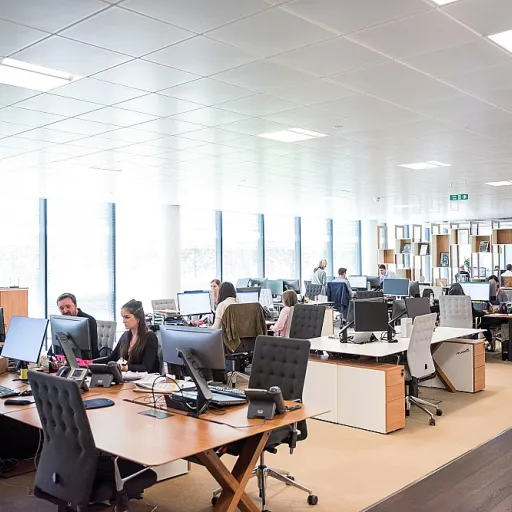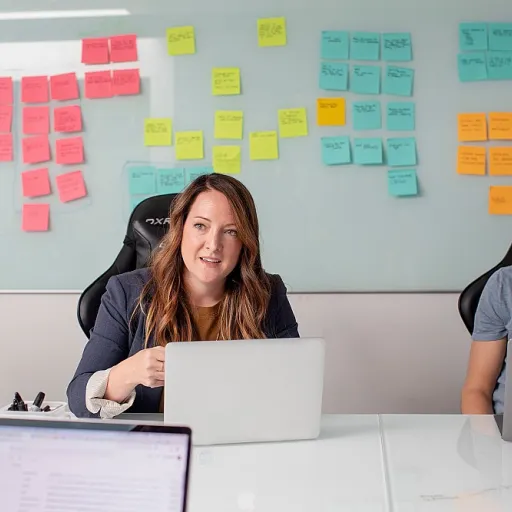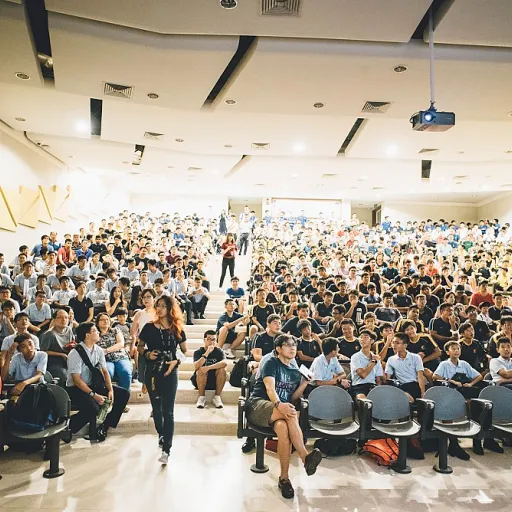
Understanding the Skills Gap
The landscape of learning and education has evolved dramatically in recent years, highlighting a significant challenge faced by both educational institutions and industries: the skills gap. This chasm between the skills that students and employees possess and those required by employers is widening, demanding innovative strategies to bridge it. Understanding the skills gap is crucial as it directly impacts educational outcomes, workforce readiness, and long-term economic growth.
The Necessity of Skills Evolution
As technology advances, the skills required in the workforce continually evolve, placing pressure on educational systems to adapt. Traditional assessment methods often fail to capture the breadth of skills required in rapidly changing industries, leading to a mismatch. By adopting innovative learning strategies, such as personalized learning paths and real-time feedback mechanisms, educators can better prepare students for future challenges.
Integration of Technology in Skill Assessment
With the integration of cutting edge technology into learning evaluation, there's a potential to assess skills more accurately and in real-time. Adaptive learning platforms, for instance, tailor educational experiences to individuals' learning styles and paces, enhancing knowledge retention and student engagement. Collaborative learning environments foster critical thinking and problem solving skills, key competencies needed in the modern workforce.
Transforming Traditional Models
Competency-based assessment models challenge the conventional one-size-fits-all approach by focusing on actual learning outcomes rather than time spent on a subject. These models promote tailor-made teaching methods that cater to individual strengths and weaknesses, allowing for a more nuanced and inclusive measurement of skills. This transformation is essential in preparing students to tackle real-world problems effectively.
Ultimately, awareness and understanding of the skills gap is the first step towards implementing effective educational strategies that align with future workforce needs. For more insights on how to enhance the workforce's potential through competence assessment programs, check out this comprehensive guide.
The Role of Technology in Learning Evaluation
The Intersection of Technology and Evaluation
In the realm of education, the role of technology in learning evaluation has been transformative. As learning styles evolve and adapt to new environments, technology serves as a catalyst for enhancing student engagement and knowledge retention. Educators are increasingly employing cutting edge evaluation techniques, integrating technology to provide a more interactive and collaborative learning experience. One critical aspect is the use of real-time feedback mechanisms. These mechanisms not only facilitate immediate learning outcomes but also empower students to think critically and adapt their problem-solving strategies effectively. Adaptive learning systems, for instance, tailor educational content based on a student's performance, ensuring personalized learning pathways that align with individual skills and growth. Furthermore, technology fosters collaborative learning environments, enabling students to engage in meaningful educational experiences. From digital platforms that support team-based projects to virtual classrooms, technology ensures that student engagement remains high while providing diverse learning strategies that cater to various learning pathways. Innovative learning evaluation methods also emphasize paper-free approaches, contributing to environmentally sustainable practices in educational institutions. The shift towards digital assessments not only reduces paper usage but also allows for more streamlined and efficient evaluation processes. Educational technology provides educators with a range of tools to measure and enhance critical thinking and problem-solving skills among students. Finally, as we look to the future, technology's role in educational evaluation is likely to expand further, incorporating more personalized learning experiences and sophisticated assessment models. For anyone interested in exploring this topic deeper, consider looking into essential questions to ask during the skill assessment process to gain insights into effectively leveraging technology in learning evaluation.Personalized Learning Paths
Tailor-Made Learning Experiences
In today's rapidly changing educational landscape, personalized learning is emerging as a key approach to bridging the skills gap. This educational method acknowledges that each student possesses unique learning styles and paces. Providing tailor-made learning experiences caters to individual learning pathways, ensuring that educational content aligns closely with the learner's needs and potential. Adapting educational content involves leveraging technology for a more collaborative learning environment. By utilizing adaptive learning systems, educators can offer bespoke teaching methods that foster critical thinking and problem-solving skills. Such systems collect real-time data on student engagement and learning outcomes, allowing for continuous assessment and adjustment of educational strategies. These innovative learning strategies support knowledge retention and enhance individual student engagement. Personalization in education transforms traditional one-size-fits-all methods by emphasizing the importance of varied learning styles and adaptive feedback mechanisms. Such an approach not only enhances the efficacy of learning but also prepares students for future challenges by aligning educational experiences with their intrinsic and extrinsic motivations. Moreover, personalized training development encourages students to take responsibility for their learning journey. With cutting edge tools and paper-free evaluation techniques, educators can monitor progress effectively and provide immediate feedback. As students invest more in their learning, they can develop competencies that are crucial for solving complex problems in diverse contexts. Personalized learning paths are not just about technology but also about fostering a supportive human-centric learning environment where educators play an essential role in guiding students towards achieving their potential. For more insights into how personalized learning aligns with educational priorities, consider exploring learning evaluation strategies to address identified skill gaps within training programs. Understanding the priorities behind such investments can shed light on future trends in education and workforce development.Real-Time Feedback Mechanisms
Instant Insights for Enhanced Learning
In the rapidly evolving landscape of education, real-time feedback mechanisms have emerged as a cornerstone for effective learning evaluation. These mechanisms provide immediate insights into a student's progress, allowing both educators and learners to adjust their strategies promptly. This approach not only enhances student engagement but also fosters a more dynamic and interactive educational experience.
Real-time feedback is particularly beneficial in personalized learning environments, where each student's learning path is unique. By receiving instant feedback, students can quickly identify areas that require more attention, thus improving their problem-solving skills and critical thinking abilities. This immediate response system supports adaptive learning, enabling students to navigate their learning pathways more effectively.
Moreover, real-time feedback mechanisms leverage cutting-edge technology to facilitate collaborative learning. Through digital platforms, students can engage in discussions, share insights, and receive peer feedback, all of which contribute to a richer learning experience. This collaborative approach not only enhances knowledge retention but also prepares students for future challenges by developing their communication and teamwork skills.
For educators, real-time feedback offers valuable data that can inform teaching methods and learning strategies. By analyzing feedback trends, educators can identify common areas of difficulty and adjust their instructional techniques accordingly. This data-driven approach ensures that teaching methods remain relevant and effective, ultimately leading to improved learning outcomes.
As we look to the future of education, the integration of real-time feedback mechanisms will continue to play a pivotal role in training development and evaluation techniques. By embracing these innovative methods, educators can create more engaging and effective learning experiences that cater to the diverse needs of students.
Competency-Based Assessment Models
Competency-Based Models: A Shift in Educational Evaluation
Competency-based assessment models are revolutionizing the way we evaluate learning outcomes. Unlike traditional methods that often rely on standardized testing, these models focus on the actual skills and knowledge that students can demonstrate. This approach aligns closely with the needs of today's dynamic workforce, where practical skills and problem-solving abilities are highly valued.
One of the key advantages of competency-based assessments is their adaptability to different learning styles. By allowing students to progress at their own pace, these models cater to personalized learning paths, ensuring that each student can achieve mastery in their own time. This flexibility is crucial in fostering critical thinking and enhancing knowledge retention.
Moreover, competency-based models integrate real-time feedback mechanisms, providing students with immediate insights into their performance. This feedback loop is essential for student engagement, as it helps learners understand their strengths and areas for improvement, thus promoting continuous learning and development.
Incorporating technology into these models further enhances their effectiveness. Cutting-edge tools and platforms enable educators to track student progress more efficiently and tailor educational experiences to individual needs. This integration of technology not only streamlines the evaluation process but also supports collaborative learning environments, where students can engage in peer-to-peer feedback and collaborative problem-solving activities.
As we look to the future of education, competency-based assessment models will likely play a pivotal role in shaping training development and teaching methods. By focusing on real-world skills and adaptive learning strategies, these models prepare students for the challenges of the modern workforce, ensuring they are equipped with the necessary skills to succeed in their careers.












